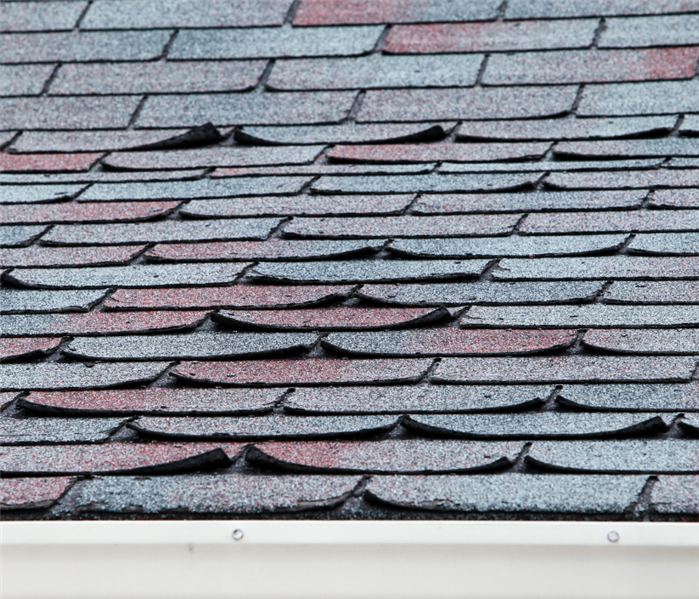How To Spot Wind Damage To Your Roof
12/8/2020 (Permalink)
 High winds can cause many different types of damage to your roof, and can spell trouble for the rest of your home.
High winds can cause many different types of damage to your roof, and can spell trouble for the rest of your home.
When strong storms come through your area, high wind speeds can cause roof storm damage even without falling debris or hail. Here, we will review what wind damage is and how to identify it on your roof.
What is Wind Damage?
Wind damage is any damage done to your roof because of high winds. This damage is usually more common on the corners, edges, and ridge line of the roof. This is because winds do not hit the surface of the roof evenly and more strongly hit these areas.
When you experience a storm with wind speeds above 45 miles per hour, your home is at risk of roof damage. The stronger winds there are, the more damage that can be done to your roof.
- Winds of 45-57 mph can tear down tree branches and remove loose shingles.
- Wind speeds of 58-74 mph can tear down trees and rip shingles right off your homes roof.
- Winds of 75-89 mph can cause widespread tree damage, flip cars or mobile homes, or cause severe roof damage to commercial buildings which usually have flat tops.
- Lastly, winds of over 90 mph will cause significant damage to homes.
The damages caused by strong winds should not be ignored, as the consequences of high winds can spread to other parts of your home.
Identifying Wind Damage on Your Roof
Any time there are higher than average winds, you should take a moment to inspect your roof for any of these signs of damage. If you suspect any damage, you should call a roofing contractor to come to further inspect your roof and explain what repairs need to be made. Keeping your roof in good condition will help to prevent large scale storm damage down the line.
Signs of Wind Damage:
- Granules Missing From Asphalt Shingles - High winds can cause the loss of granules, which are the sandpaper-like portion of the shingle. Granule loss over time is normal, but it should be concerning when you spot more loss than usual. You can look in your gutters for granule buildup, as they usually flow right into them. Losing granules on your shingles causes them to grow weaker over time.
- Curling Shingles - Curling shingles are usually found on the areas of the roof that sustain the most wind (edges, corners, at the ridge, near the chimney). This happens when wind gets under a small piece of the shingle and forces it up.
- "Lifting" Shingles - Similar to curling shingles, lifting shingles have wind get under them and cause their damage. Rather than curling, the nails of these shingles loosen and lift the entire shingle up, and can break the sealant between the shingle layer and possibly expose the lower portion of the roof. From the ground, this type of wind damaged shingles are hard to spot, as they are not as obvious as curled or completely missing shingles.
- Entire Shingles Missing - This is probably the easiest way to spot wind damage to your roof, as it is easy to identify an area where a shingle is missing.
- Damaged Soffit or Fascia - Fascia is the long, straight board the run along the lower edge of the roof, while soffit is directly on the underside of the fascia. Both of these help prevent moisture from reaching inside the roof. Damage to these may look like hanging or ripped off soffit or fascia.
- Damaged Chimney - The chimney will take on higher wind levels than most of the roof, making it susceptible to storm and wind damage. If you see damaged flashing around the base of the chimney or cracks or missing bricks, it may have been damaged by high winds.
- Roof Leaks - When your roof sustains any of the damages above, it will be highly susceptible to roof leaks. You should inspect inside your home or attic of any signs of water damage or leaks and have the damage addressed immediately, as water damage can continue to spread throughout your home and even cause mold growth.
What To Do When You Find Wind Damage
If you have clear and obvious wind damage that needs to be handled right away, you should contact your insurance company and file a claim. Then, you should call a reputable roofing contractor to provide a roof inspection and detail what needs to be repaired. Don't take wind damage lightly, as it will lead to further roof damage and increase the likelihood of roof leaks and water damage in your home.






 24/7 Emergency Service
24/7 Emergency Service